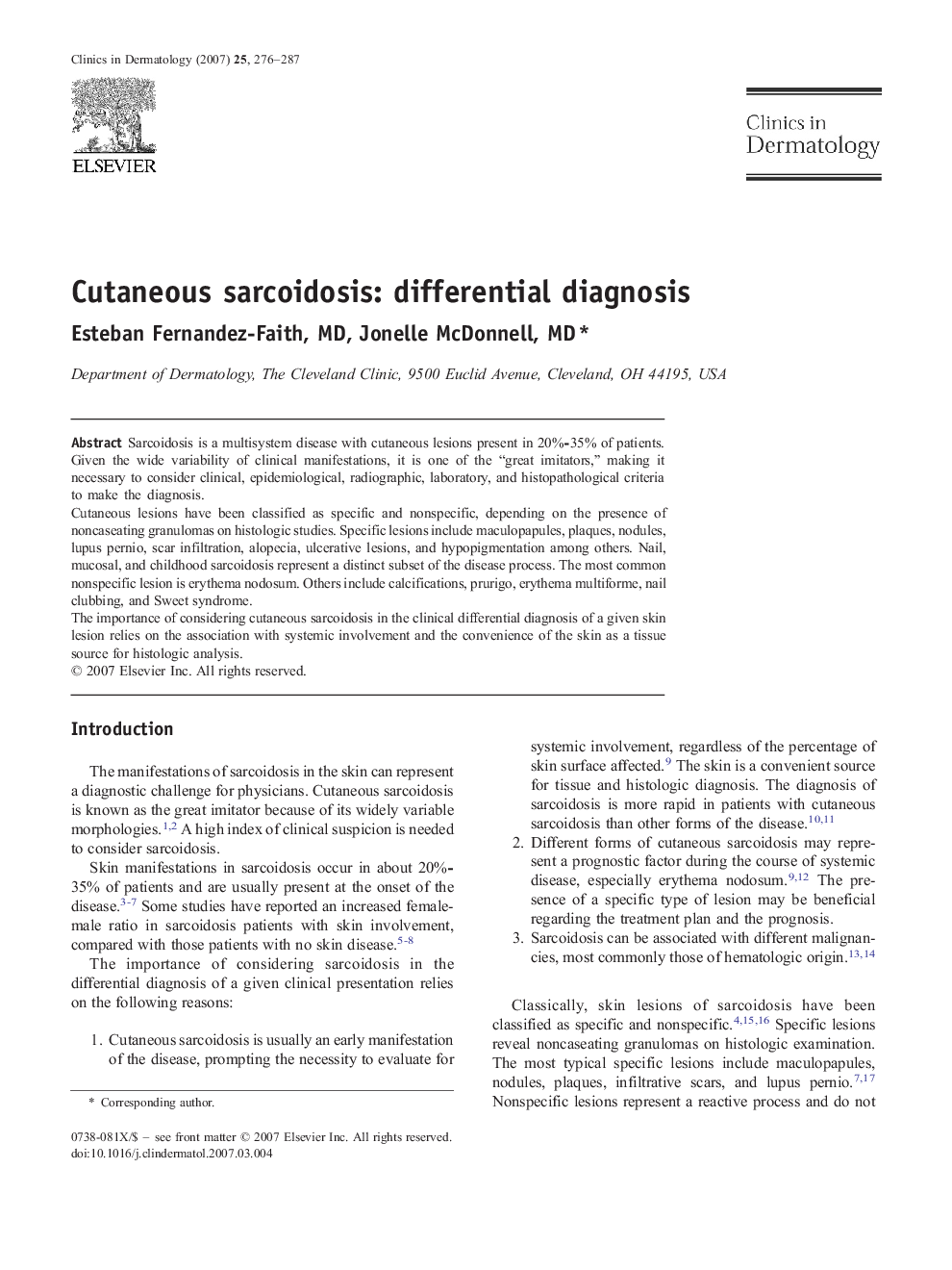| Article ID | Journal | Published Year | Pages | File Type |
|---|---|---|---|---|
| 3195244 | Clinics in Dermatology | 2007 | 12 Pages |
Sarcoidosis is a multisystem disease with cutaneous lesions present in 20%-35% of patients. Given the wide variability of clinical manifestations, it is one of the “great imitators,” making it necessary to consider clinical, epidemiological, radiographic, laboratory, and histopathological criteria to make the diagnosis.Cutaneous lesions have been classified as specific and nonspecific, depending on the presence of noncaseating granulomas on histologic studies. Specific lesions include maculopapules, plaques, nodules, lupus pernio, scar infiltration, alopecia, ulcerative lesions, and hypopigmentation among others. Nail, mucosal, and childhood sarcoidosis represent a distinct subset of the disease process. The most common nonspecific lesion is erythema nodosum. Others include calcifications, prurigo, erythema multiforme, nail clubbing, and Sweet syndrome.The importance of considering cutaneous sarcoidosis in the clinical differential diagnosis of a given skin lesion relies on the association with systemic involvement and the convenience of the skin as a tissue source for histologic analysis.
